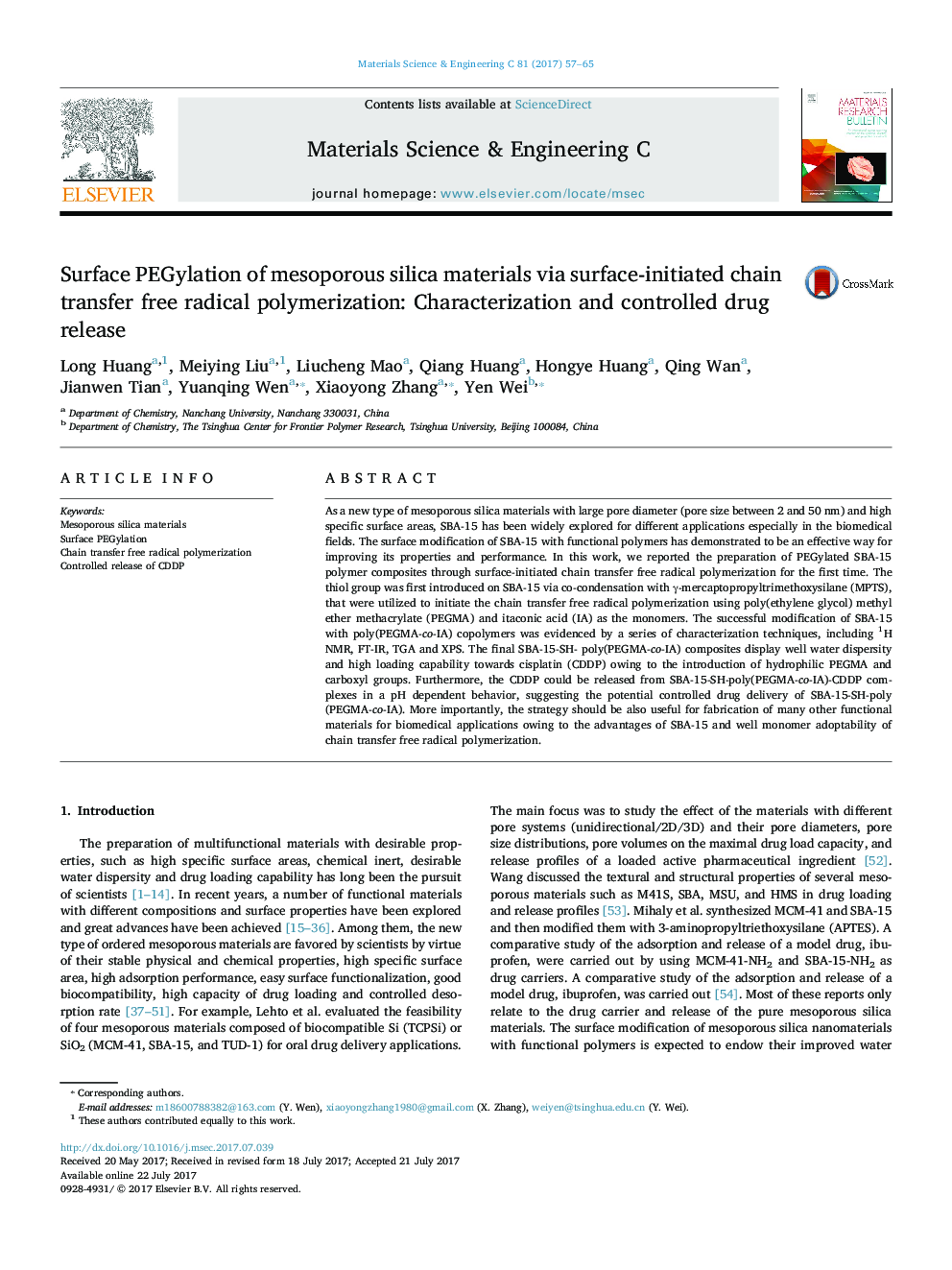| کد مقاله | کد نشریه | سال انتشار | مقاله انگلیسی | نسخه تمام متن |
|---|---|---|---|---|
| 5434213 | 1509140 | 2017 | 9 صفحه PDF | دانلود رایگان |

- Surface modification of SBA-15 through chain transfer free radical polymerization
- SBA-15-SH-poly(PEGMA-co-IA) composites show well water dispersity.
- SBA-15-SH-poly(PEGMA-co-IA) composites show controlled drug release behavior.
- Chain transfer free radical polymerization is promising for fabrication multifunctional polymer composites.
As a new type of mesoporous silica materials with large pore diameter (pore size between 2 and 50 nm) and high specific surface areas, SBA-15 has been widely explored for different applications especially in the biomedical fields. The surface modification of SBA-15 with functional polymers has demonstrated to be an effective way for improving its properties and performance. In this work, we reported the preparation of PEGylated SBA-15 polymer composites through surface-initiated chain transfer free radical polymerization for the first time. The thiol group was first introduced on SBA-15 via co-condensation with γ-mercaptopropyltrimethoxysilane (MPTS), that were utilized to initiate the chain transfer free radical polymerization using poly(ethylene glycol) methyl ether methacrylate (PEGMA) and itaconic acid (IA) as the monomers. The successful modification of SBA-15 with poly(PEGMA-co-IA) copolymers was evidenced by a series of characterization techniques, including 1H NMR, FT-IR, TGA and XPS. The final SBA-15-SH- poly(PEGMA-co-IA) composites display well water dispersity and high loading capability towards cisplatin (CDDP) owing to the introduction of hydrophilic PEGMA and carboxyl groups. Furthermore, the CDDP could be released from SBA-15-SH-poly(PEGMA-co-IA)-CDDP complexes in a pH dependent behavior, suggesting the potential controlled drug delivery of SBA-15-SH-poly(PEGMA-co-IA). More importantly, the strategy should be also useful for fabrication of many other functional materials for biomedical applications owing to the advantages of SBA-15 and well monomer adoptability of chain transfer free radical polymerization.
138
Journal: Materials Science and Engineering: C - Volume 81, 1 December 2017, Pages 57-65